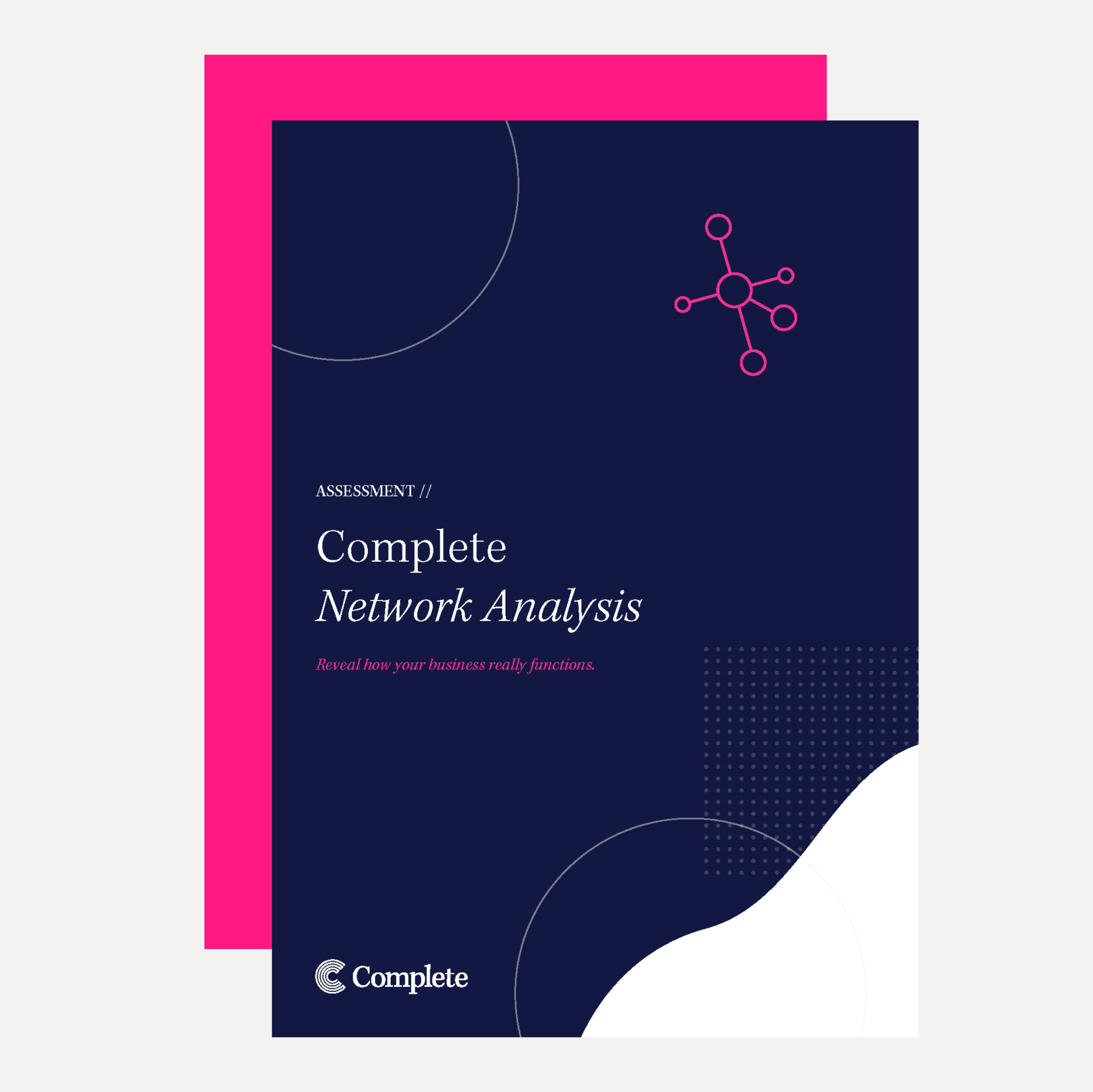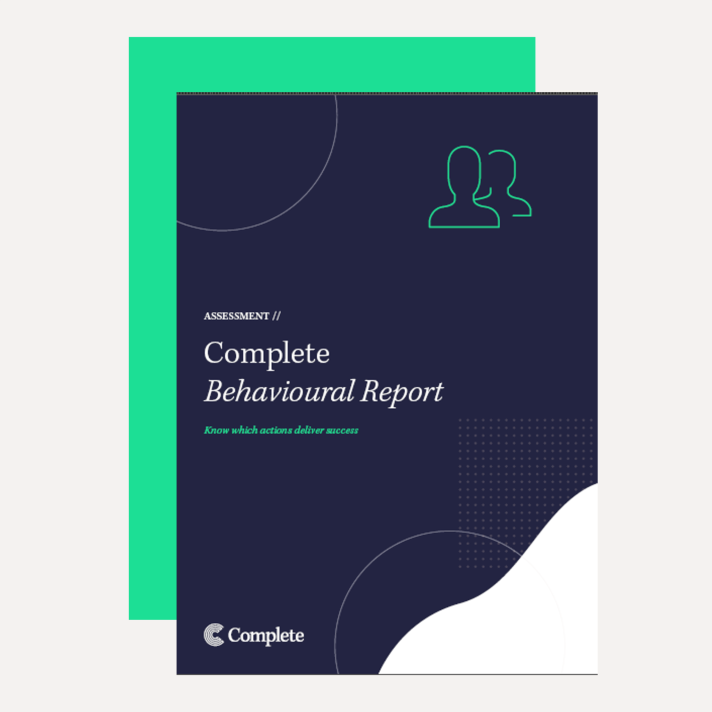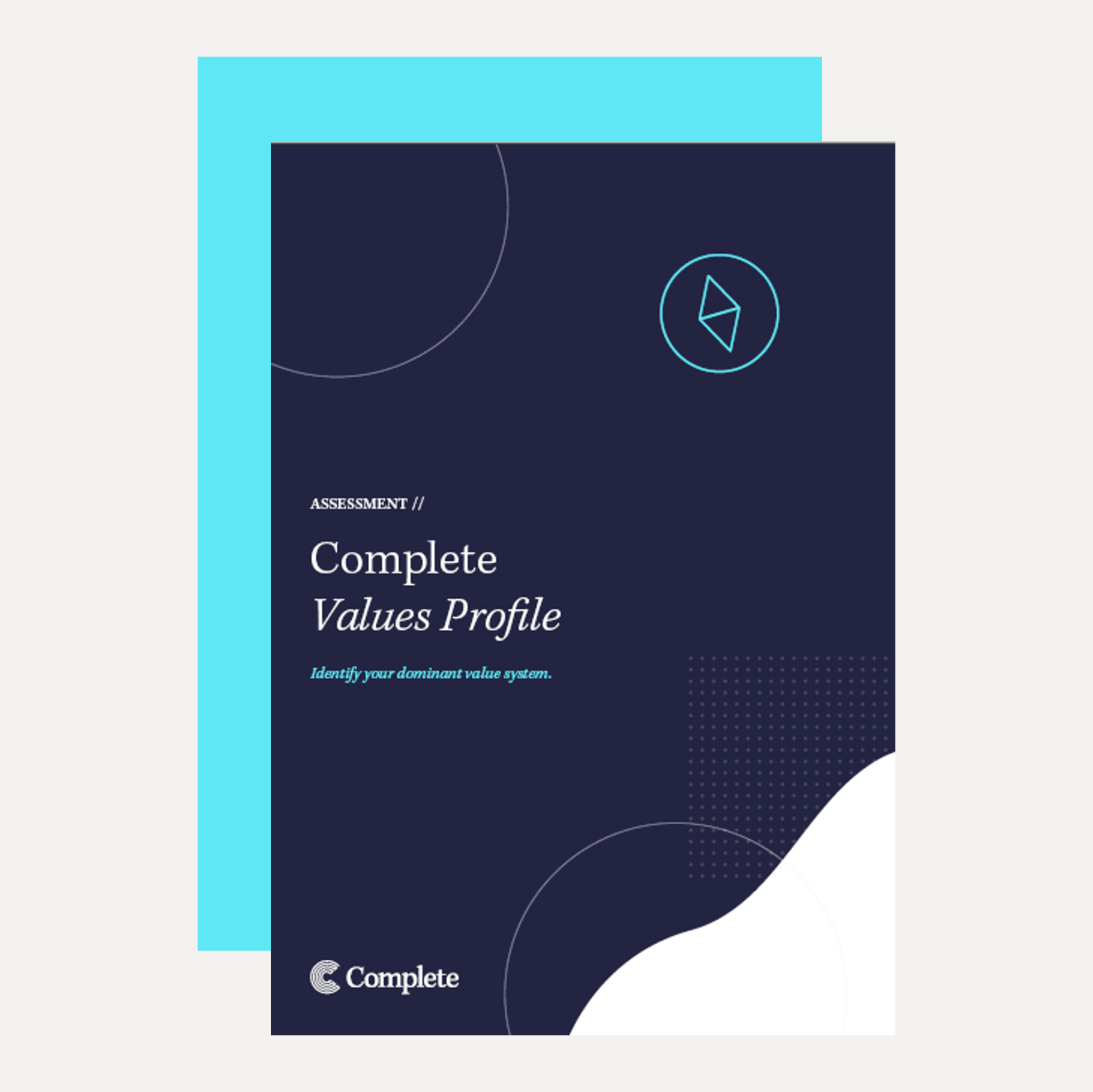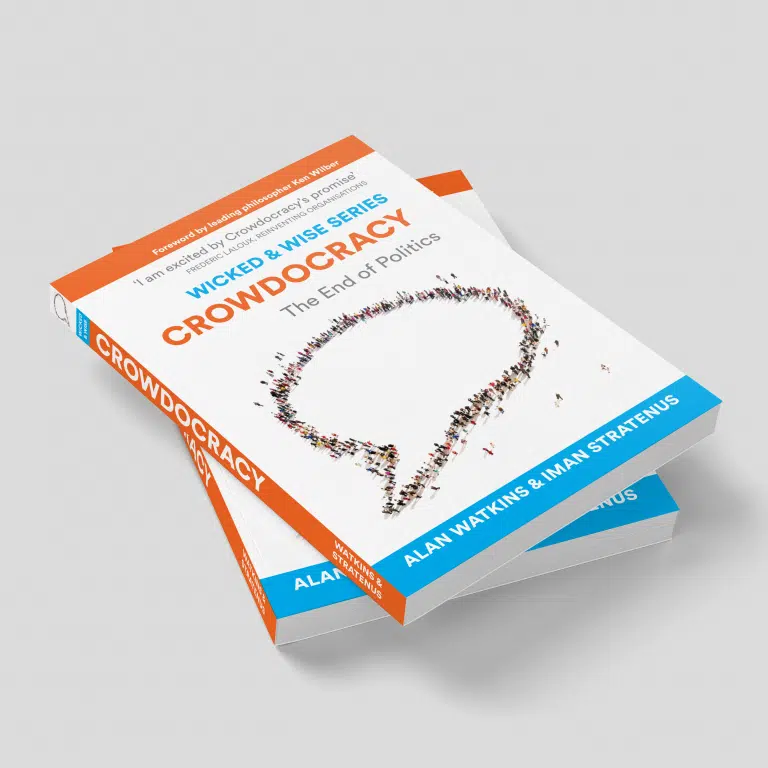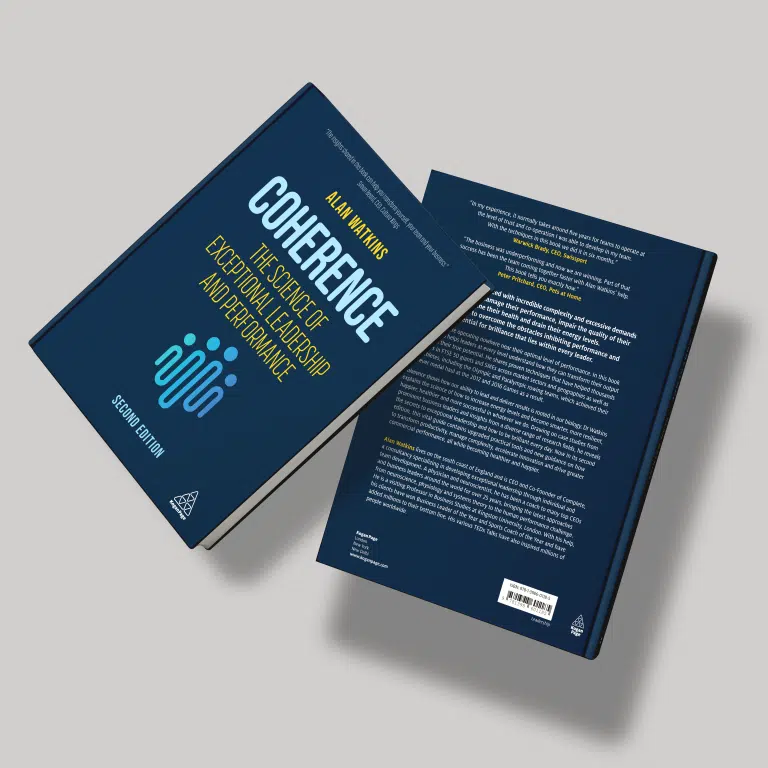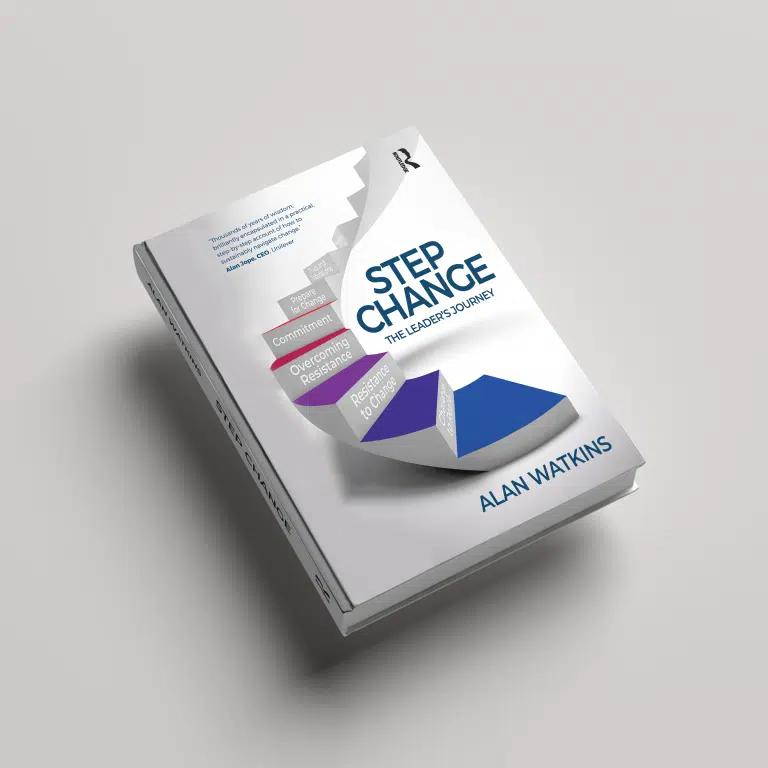In the fast-paced and ever-evolving landscape of modern organisations, leadership is no longer defined by a rigid hierarchy, but by the ability to exhibit specific behaviours that drive success. The concept of ‘Behaviour’ lies at the heart of this transformation, serving as the building blocks upon which skills, competencies, and capabilities are developed.
In this summary of our webinar Q&A, we delve deep into the world of behaviours, guided by the expertise of Alan Littlefield, our behaviour industry expert with over 17 years of experience.
What is a ‘Behaviour’?
At Complete we define a ‘Behaviour’ as a single, observable, and generalisable action that delivers an outcome. It is a discreet and well-defined action that can be observed in someone’s speech and body language or in their writing tone and word choice. Behaviours can be seen in one-to-one and group interactions, and they are specific and can be described qualitatively.
Behaviours are considered fundamental and are the building blocks upon which skills, competencies, and capabilities are developed. They are like individual ‘letters’ in a behavioural alphabet. When combined in a certain sequence or order, these letters can form a skill, which is like a word or sentence made up of these individual behaviours. For example, asking open questions or generating strategic ideas are behaviours that can be part of a skill.
They are observable and can be written down as a qualitative description, but to measure and develop them effectively, assessment tools like the Complete Behavioural Report are required.
Why do Behaviours matter?
Behaviours matter because they are essential in the context of modern organizations, which operate differently from traditional hierarchical structures. In the past, organizations were hierarchical and focused on standardization, goal alignment, planning, and control. However, contemporary organizations are more networked, with various parts of the organization interacting in non-hierarchical ways. This shift in organizational structure necessitates a different set of behaviours. For example, in a networked organization, engaging, influencing, adapting and connecting become more important. These behaviours are crucial for effectively navigating and succeeding in a networked and agile organizational environment. While some traditional behaviours like planning and control are still relevant, their application and significance may differ in a networked context.
Research on effective leadership behaviours has been conducted since the late 60s and early 70s. Four main streams of research emerged, each led by key academics and research centres primarily in the US, which was later validated in the UK. These strands of research converged on a set of 11 performance-enhancing behaviours that are vital for leadership effectiveness in modern organizations. Understanding and cultivating these behaviours is essential for leaders to thrive in today’s complex and networked business landscape.
You mention that the Behaviours work across industries, are there any it doesn’t work for?
The Complete Behavioural Report is a versatile tool that can be applied effectively across industries and organizational contexts. In our experience, we have yet to encounter an organization where the behavioural model wasn’t relevant. However, it’s important to note that the research clearly shows that
the specific conditions in which these 11 Behaviours are valid is one that is a complex, dynamic, and competitive environment. In today’s business landscape, finding a truly simple, stable, and non-competitive environment is highly unlikely given the global pace of change and volatility. Of course, in a specific context with unique dynamics and challenges, the specific behaviours that are most relevant will vary.
Additionally, our individual perspectives, shaped by our own map of the world, can influence how we perceive and assess behaviours. To ensure objectivity in observing and assessing behaviours, it is essential to undergo detailed training. Once you’ve mastered this skill, it’s like looking through a clear lens that allows you to see behaviours objectively, putting aside personal biases. This adaptability and objectivity make the concept of behaviours applicable not only in corporate sectors but also in education and other domains.
Do these Behavioural Clusters flow in any particular order of importance?
The Behavioural Clusters offer a flexible framework for understanding and improving leadership effectiveness. While these behaviours can manifest at various times and in any order, there is a way to conceptualize them in a sequence that helps to remember them. Starting at the top right of the model and moving in a reverse U-shape to the top left, you can think of this as an overall leadership process. Here’s a breakdown:
Imagine Cluster: This phase involves thinking and envisioning the future or potential solutions. It requires gathering information, generating ideas, and exploring multiple options..
Involve Cluster: After the ideas phase, you may need to engage with others to maximize their contributions. This involves facilitating discussions, connecting with people, and fostering their development.
Ignite Cluster: This cluster focuses on your personal ability to create impact and inspire others. It involves effective communication, building confidence, and influencing people to partner with you.
Implement Cluster: Finally, the execution phase comes into play. Here, you translate plans into action and define who is responsible. Continuous measurement of goals then drive performance enhancements.

So, while there is a suggested sequence, the importance and deployment of the Behaviours will vary depending on the specific context. In a strategic conversation, for instance, you might observe a blend of any of these Behaviours, and even all 11, from a single individual. Using this rough sequence as a mental framework can help ensure that you consider all 11 Behaviours in your leadership approach.
Does the need for a Behaviour depend on the circumstances?
Absolutely, the need for specific behaviours can vary significantly depending on the context. In The specific circumstances and the nature of your role or interaction will point toward certain behaviours being more relevant. You should focus on plugging any development gaps in these key behaviours. Let me illustrate this with a few examples:
Customer Interaction: Imagine you’re meeting a customer for the first time. The behaviours required for that initial interaction are very different from those needed when you’ve already delivered work for the customer, and you’re in a review or setting up the next project. The nature of the relationship has evolved, and so should your behaviours.
Performance Conversation: When you’re engaged in a performance conversation with a direct report, the behaviours you exhibit will differ from those in a customer interaction or a team strategy presentation. Each situation calls for a distinct set of behaviours.
Inspiring a Large Audience: Standing up in front of a room filled with 100 people to inspire them about the strategy for the next five years demands a unique set of behaviours compared to one-to-one interactions.
One noteworthy behaviour that emerged consistently across the four research streams is Connects with Empathy. This behaviour emphasizes the importance of listening to and connecting with others—a fundamental skill that transcends different circumstances and contexts, highlighting its universal relevance.
In a team context, it’s beneficial for the team to collectively cover all 11 behaviours at a strong level, ensuring that the team can operate effectively across various situations. When analysing a team’s behavioural profile, certain behaviours may be low or entirely missing for the team. This insight can serve as a powerful diagnostic tool. For instance, if a team lacks the Influences Others behaviour, it could explain why they are struggling to gain traction in sales or with their strategy. Behavioural data is a valuable resource for identifying and addressing team development areas.
In your years of experience, which level has been the most common in the corporate environment?
Over my years of experience, I’ve observed that the prevalence of different behavioural levels in the corporate environment can vary quite significantly. It’s essential to understand that the level of behaviour you see often correspond to an leader’s seniority. Senior leaders, such as CEOs and the C-Suite executives, tend to exhibit more high-level behaviours. This is because they have accumulated years of experience, allowing them to develop and refine their behaviours. And also, there’s a greater demand for senior leaders to demonstrate these high-level behaviours due to their strategic responsibilities. As a consequence, strategic strengths, or level 6 behaviours, are relatively rare and are only expected to be demonstrated once individuals reach fairly senior director-level positions.
However, I’d like to reframe the question slightly. Rather than focusing solely on which level is the most common, it’s also more valuable to consider which specific behaviours are prevalent among leaders. Here are some behaviours that you commonly find in leadership profiles:
Seeks Information: Leaders often excel in gathering data and information to inform their decisions.
Generates Ideas: They are skilled at brainstorming and generating creative solutions.
Drives Action: Leaders can inspire and motivate teams to take action and achieve goals.
Builds Confidence: Confidence in their opinions and decisions is regarded as a hallmark of effective leaders.
These four behaviours are frequently observed among leaders. However, what’s equally important to note are the less developed behaviours:
Thinks Flexibly: While confident, single-minded thinking can be rewarded, the ability to think flexibly and consider multiple perspectives is crucial for fostering innovation.
Connects with Empathy: This behaviour involves listening to and empathizing with others, a skill that enhances collaboration and teamwork.
Facilitates Interaction: Leaders who excel in this area are adept at bringing people together and guiding them toward shared solutions.
In summary, the level of behaviours in the corporate environment can vary depending on an individual’s seniority and role. However, what truly matters is the specific behaviours that leaders exhibit. A well-rounded leader should aim to develop a diverse set of behaviours, encompassing both the more common high-level behaviours and the less developed ones that promote innovation, empathy, and effective collaboration.
Is this model property of Complete or taken from the research?
The model we are discussing is not proprietary to Complete; it is based on extensive research that is publicly available. In fact, one of the key researchers involved in developing this model also established a business where I (Alan Littlefield) worked for five years before joining Complete. We partnered with them and have permission to use the model in our work. The model itself is drawn from the multiple streams of research conducted by a range of experts in the field. What sets us apart and makes it proprietary is our unique method of assessing and presenting the behavioural data, which I’ll be sharing more about shortly.
What’s different about Complete’s assessment approach?
Our assessment approach is indeed innovative and sets us apart in the market. Rather than presenting you with a list of statements and asking you to agree, disagree, or provide frequency ratings, we have taken a completely different approach to behavioural assessment.
For each behaviour, you are presented with two questions, one addressing a one-to-one scenario and the other a team or group scenario. You are then given statements describing all six levels of the behaviour and you have six points to distribute across one, two, or three of the answers. This means you have the flexibility to allocate all six points to one answer if you feel that behaviour is consistently exhibited or spread those points across two or three answers to provide a more nuanced assessment.
The result is a distribution map that offers valuable insights into how individuals perceive specific behaviours. For instance, it can reveal whether a behaviour is generally seen positively or if there are potential areas of concern where individuals perceive certain behaviours differently. This assessment approach empowers you with a deeper understanding of behavioural patterns and how they impact performance and relationships. It goes beyond simple agreement or frequency ratings and provides a more dynamic view of an individual’s behaviours.
Additionally, our assessment system allows for easy data manipulation and analysis. You can explore individual and group data, deselect specific individuals to view average results, and tailor your analysis to focus on the most relevant data points for your needs. This level of customization and depth of analysis makes our assessment process a powerful tool for personal and team development, hiring decisions, and leadership benchmarking.
Can you share examples of implementing the behavioural alphabet in some corporate global companies, what works well there, and even better if?
Absolutely, there are numerous impactful ways to implement the Behavioural Alphabet model within corporate global companies. Over my 17 years of experience, I’ve witnessed a wide array of applications, and I’ll share some insights without naming specific organizations, as confidentiality is paramount
- Individual Leader Development: One of the most straightforward applications is to conduct pre- and post-coaching assessments for individual leaders. This allows you to gauge the effectiveness of coaching by tracking changes in their behaviours over time.
- Team Profiling: Profiling a team provides valuable insights into strengths and gaps. Understanding where a team excels and where improvements are needed can guide targeted development efforts.
- Talent Identification: Comparing an individual’s behavioural profile to benchmarks for their leadership level helps identify high-potential talent. This information can then inform tailored development plans for this talent group.
- Recruitment and Promotion: Behavioural assessments play a crucial role in recruitment and promotion decisions. They provide an objective basis for evaluating candidates’ suitability for specific leadership roles.
- Leadership Development Programs: Building leadership development programs or academies for emerging leaders can be enhanced by leveraging behavioural data. It helps address specific development needs and supports smooth transitions through the leadership pipeline.
- Mentorship Pairing: Matching mentors with mentees based on complementary behavioural strengths and weaknesses can create powerful mentoring relationships that drive growth.
- Cultural Transformation: Aligning behaviours with underlying values is essential for fostering a desired organizational culture. Behavioural data can help bridge the gap between cultural aspirations and tangible actions.
- Leadership Framework Review: Organizations can use behavioural assessments to evaluate their existing leadership frameworks. This helps identify which behaviours are missing or require further emphasis.
- Assignment Matching: Matching leaders to assignments becomes more precise when you can refer to their behavioural data. It ensures the right person is selected for a specific role or project.
- Performance Reviews: Behavioural assessments can also be integrated into performance review mechanisms, offering a more comprehensive evaluation of leadership effectiveness.
One notable example involved an executive team in the travel industry. We assessed this team three times over a period of several years, with intervals of one to two years between assessments. Each assessment included interviews and 360-degree feedback. What was remarkable was that despite changes in key team members during this time, the team’s behavioural profile improved with each measurement point. This was due, in part, to their commitment to holding each other accountable for their behaviours and recruiting higher-capability individuals. It demonstrates the power of consistent assessment and development efforts.
In summary, there are numerous ways to utilize the Behavioural Alphabet model, and what works well often depends on the specific goals and needs of the organization. The key is to leverage behavioural data to inform decisions and strategies that drive leadership excellence.
How do I find out more, can I try out the assessment or get certified?
Your ability to explore and engage with our assessment is context-dependent and adaptable to your organization’s specific needs. Let me provide some insights and options:
Tailored Focus: You can tailor the assessment to focus on specific behaviours that are most relevant to your organization’s current challenges. For example, if there are five key behaviours crucial to your business at the moment, you can prioritize those.
Pilot Testing: Consider piloting the 360 tool with a select team or group within your organization. This allows you to test its effectiveness, validate the chosen behaviours, and gather valuable insights to refine your approach.
Integration: Explore how the assessment can be integrated into your existing processes, such as talent management, performance reviews, and leadership development programs. This adaptability makes it a powerful tool for various applications.
Regarding getting started, we have several offers for you:
Self-Assessment: You can try the self-assessment version of the 360 tool for free. This version allows you to complete the assessment for yourself and offers a firsthand experience of the platform and content.
Certification Course: We are planning to launch a certification course in October. If you’re interested in becoming a certified trainer in using this tool, signing up for information will keep you updated about the course’s launch.
Request a Call: If you have specific needs or questions, you can request a call with one of our senior practitioners at Complete. During this call, we can discuss your unique requirements and explore how our approach to measuring and developing behaviours can benefit your organization.
Do these exhibited behaviours generally correspond with one’s value system’s centre of gravity?
If you’re intrigued by the interplay of values and behaviours, you’ll find our Values Certification program enlightening. Moreover, pairing it with the Behavioural Report can offer a comprehensive understanding of how values influence behaviours in various contexts. To answer the question, yes, your values indeed play a significant role in influencing the behaviours you exhibit. Here’s are a couple of examples:
Value for Inclusivity: If your value system places a strong emphasis on inclusivity, and involving others, you’re more likely to demonstrate behaviours like Connects with Empathy.
Value for Winning and Results: Conversely, if your values lean toward competitiveness and achieving outstanding results, you may exhibit stronger behaviours in areas such as Drives Action and Influences Others.
In essence, your internal values shape the external behaviours you display. It’s a fascinating interplay between what you hold dear and how you interact with the world around you. Your values act as a compass, guiding your behaviours and actions in alignment with what matters most to you.
Why do 360 feedback scores lower than an interview. What accounts for this difference? And does the frequency of 360s influence the outcomes?
It’s not that 360 feedback scores lower than an interview; it’s more about the accuracy of each assessment method. To provide some context:
If we consider a perfect 100% representation of the actual behaviours in the workplace as the most accurate, closely shadowing someone at work comes very close to that level. An interview typically captures about 85-90% of the perfect picture, whereas a 360 assessment tends to represent around 60-70% of that ideal. So, while a 360 assessment may not be as close to the real truth as an interview, it still offers valuable insights into behaviours and their impact.
When organizations regularly implement 360 assessments and integrate them into their culture, something remarkable happens. People become accustomed to the assessment model, and it becomes a shared language within the organization. This familiarity enhances the accuracy of the assessments over time. I had the privilege of working with a client where the behavioural model was fully integrated into their leadership approach—performance evaluations, talent development, promotions, and more. Over time this became a leadership ‘language’ and assessments became more accurate and supported powerful leadership development interventions across the global business.
In summary, while the accuracy of 360 assessments may initially vary from interviews, their effectiveness can improve significantly when they are consistently applied and embraced within an organization’s culture.
Can it be used to determine current team capability for a new project or organization direction of travel?
Absolutely, it can be an invaluable tool for assessing the current capability of a team in the context of a new project or a shift in organizational direction. Let me break down how you can use it effectively:
- Identify Needed Capabilities: Suppose you’re embarking on a new strategic initiative that demands a distinct set of capabilities from your team. For instance, if the need is for increased innovation, you might be looking for behaviours such as Thinks Flexibly and Facilitates Interaction among team members.
- Behaviour Assessment: You can use the assessment to pinpoint precisely at what level the key behaviours are being demonstrated. You can use a combination of self and 360-assessment, with interviews or live observation of team meetings.
- Feedback & Gap Analysis: Now in discussion with the team, you can review the data and determine which gaps must be filled by the team. Some gaps may be filled by the next level down, other parts of the organisation or contracted in externally.
- Development Plan: Armed with this data, you can create a targeted development plan. This plan can be used to bridge the identified gaps, enhance the team’s capabilities, and align them with the project or organizational direction.
By using this approach, you’ll not only ensure that your team is better prepared for the new challenge but also that they have the specific behaviours needed to drive success in the desired direction of travel.
Several behavioural solutions exist in the market. What are the main decisive differentiators of the alphabet based on feedback from your clients?
Indeed, the behavioural assessment market is quite crowded, but here’s what sets our approach apart, based on feedback we’ve received from our valued clients:
- Granularity of Six Levels: The Complete Behavioural Report stands out with its granularity of six levels of behaviour. While many other assessments may have a more simplified approach, we offer a comprehensive range from level one to level six. This depth allows for a more nuanced and accurate evaluation of behaviours.
- Unique Scoring Mechanism: Unlike traditional agree/disagree formats, our scoring mechanism is distinctive. We provide participants with six points, which they can allocate across the behaviour levels. This uniqueness in scoring enhances the validity and resonance of the feedback, making it more impactful for clients.
- Investment in Digital Portal: We are continuously investing in building out our digital portal. While it’s still in development, it reflects our commitment to providing a user-friendly and technologically advanced platform for our clients. Your feedback as customers will play a crucial role in shaping its evolution.
- Client-Centric Approach: At Complete, we prioritize your needs and value your feedback. Our goal is not to replicate what everyone else is doing, but to offer a solution that truly adds value to your organization. We thrive on making a difference and providing you with a unique and impactful tool.
We genuinely appreciate your interest and participation in our webinar. Feel free to connect with us on LinkedIn, subscribe to our newsletters, and explore our app and website for further insights and resources. Your engagement and feedback are vital to our continuous improvement. Thank you for joining us today, and we look forward to connecting with you in the future. Have a great day!













